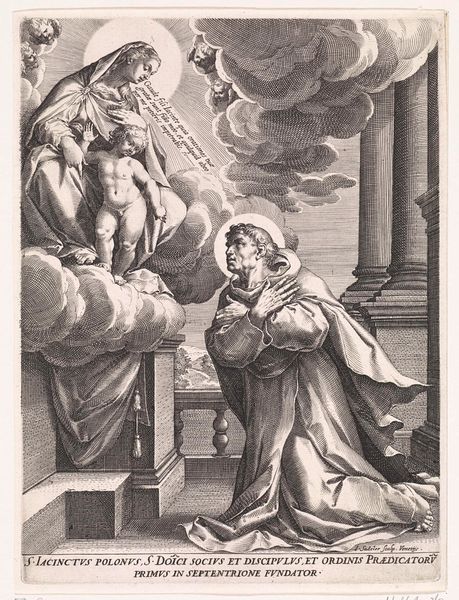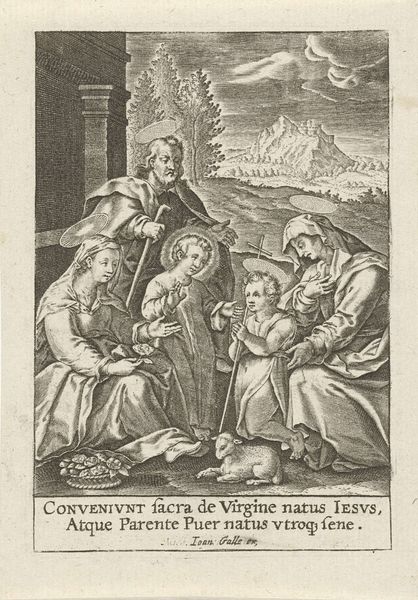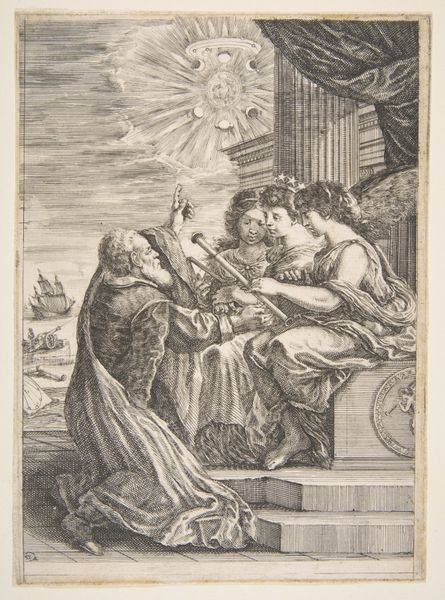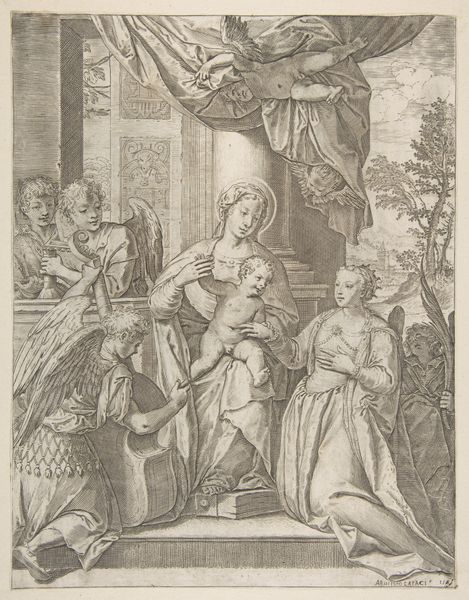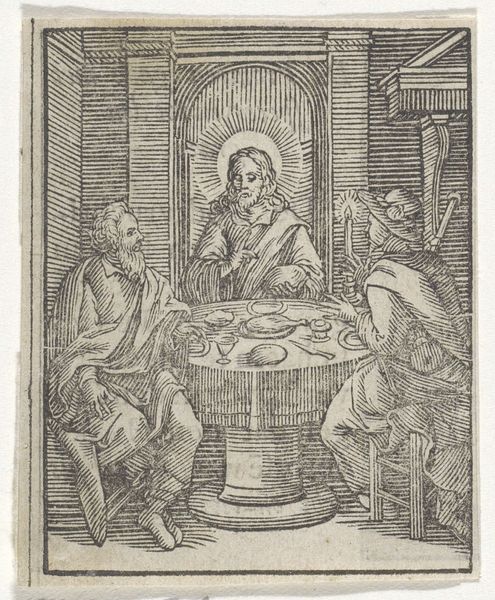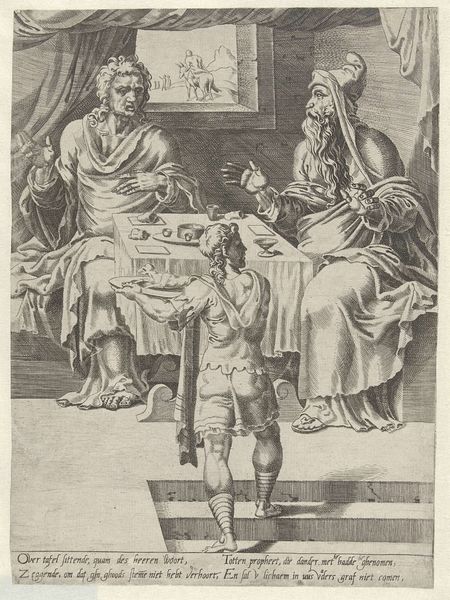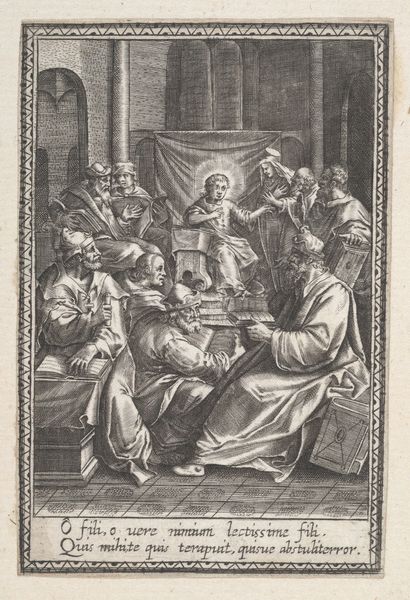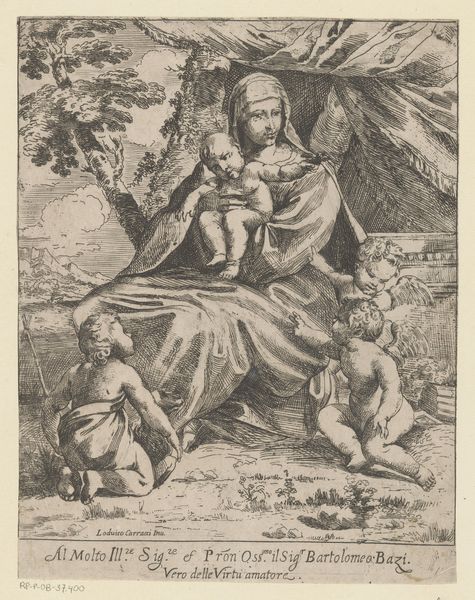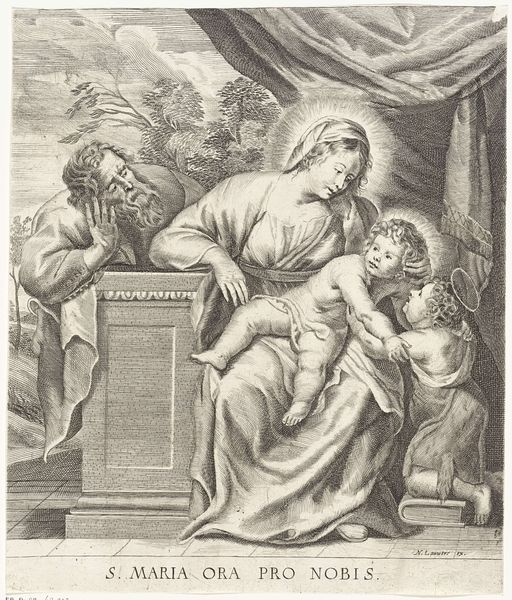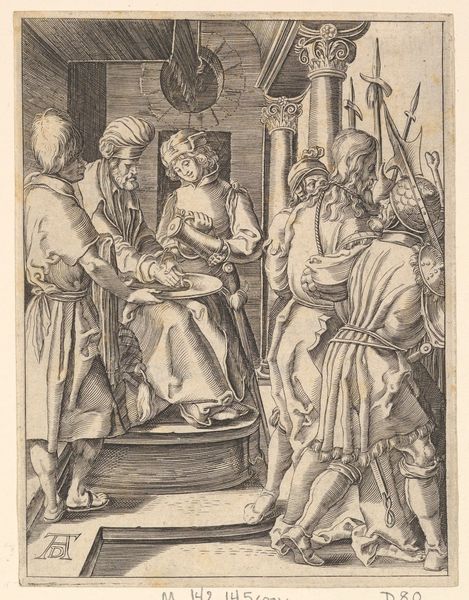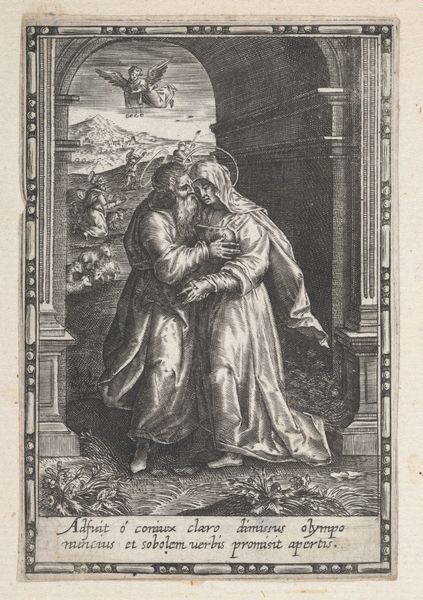
print, etching, engraving
#
allegory
#
narrative-art
#
baroque
# print
#
etching
#
figuration
#
line
#
history-painting
#
engraving
Dimensions: width 54 mm, height 90 mm
Copyright: Rijks Museum: Open Domain
Curator: Here we have Theodoor Galle’s print, likely dating sometime between 1581 and 1633, entitled "Maria vertelt Jozef over de annunciatie"—or "Mary tells Joseph about the Annunciation". It’s currently held at the Rijksmuseum. Editor: My first impression is one of thoughtful contemplation. The monochrome etching creates a solemn mood, a kind of quiet revelation unfolding. The composition directs the eye upward, heavenward. Curator: It's fascinating how Galle employed etching and engraving techniques to produce this print. Consider the labor invested in meticulously carving the lines, the deliberate use of acid to create depth and shadow. The very process speaks to the sacred nature of the subject. How would this image have circulated, been consumed? Editor: And let’s look closer at those lines. Note how they give form to familiar iconographic symbols. Halos surround the heads of Mary, Joseph, and even God the Father in the swirling clouds above. Doves at their feet signify peace, the divine spirit, and of course, the Holy Family itself. Each figure is rendered according to established visual traditions. Curator: Yes, the print medium itself would make the image relatively more accessible. We must remember the economics of art making. Was this intended for private devotion, wider distribution, or perhaps as an educational tool? This determines both its meaning and impact. The relatively simple materials belie the sophistication of the imagery itself. Editor: And Joseph's gesture—hand to his head, brow furrowed—shows internal struggle. Mary points upwards, referencing her divine encounter. Their expressions are crucial; they depict the moment of belief and dawning comprehension central to the narrative. The very human aspects, even in a scene involving the divine. Curator: I agree. These prints reveal how devotional images entered the everyday lives of people. The choices that Galle made in the studio would be based on how this piece might interact with his patron’s domestic life and routines, offering accessible points for ritual reflection. Editor: Ultimately, the artwork’s enduring power comes from how these combined symbols express universal ideas: faith, doubt, divine will. They provide a link across time, revealing a collective cultural memory tied to key events in religious history. Curator: Thinking about Galle's methods offers fresh perspective on the dissemination of religious belief. Editor: And analyzing those symbols reminds us that every image, however small, is embedded in a larger visual language we continue to inherit and interpret.
Comments
No comments
Be the first to comment and join the conversation on the ultimate creative platform.
